
The U.S. military’s nickname for the no-fly zone in Libya sounds like the beginning of a long adventure. But Defense Department officials insist that there’s no hidden meaning behind “Operation Odyssey Dawn.” It’s just the product of the Pentagon’s semi-random name-generating system.
Each command within the vast Defense Department apparatus is given a series of two-letter groupings that they can use for their operations’ two-word sobriquets. Under the system, the U.S. Africa Command, nominally in charge of the Libya strikes, was given three sets of words that it could begin the operation with.
“These words begin between the letters JF-JZ, NS-NZ and OA-OF, and those three groups give about 60 some odd words,” explains Africom spokesman Eric Elliott. “So, the folks who were responsible for naming this went through and they had done recent activities with NS and they went to O.”
Using the O series of letters, Africom officials picked out “Odyssey” for the first word. The second word is picked “as random as possible because that’s the goal of these operational names,” says Elliot. Africom pulled out “Dawn” for its second word and the resulting combination, “Odyssey Dawn,” is devoid of any intended meaning, Elliott insists.
The modern system for assigning names to operations, exercises and the like came out of bad PR experiences in the Korean and Vietnam wars, according to Lt. Col. Gregory Sieminski’s brief history of “The Art of Naming Operations,” published in Parameters in 1995. Nicknames like “Operation Killer” during the Korean war and Vietnam’s “Operation Masher,” Sieminski wrote, caused controversy when reported in the press. As a result, the Pentagon issued its first guidelines restricting how nicknames can be formed in 1972 and created the two-letter system in 1975.
Combatant Commands still have to be careful about what words they pick under the two-letter system. Official guidelines prohibit “well-known commercial trademarks” in operation nicknames, as well as ”exotic” or “trite” choices. Nicknames can’t be spelled similar to or sound like codewords.
And in a reflection of the negative impact of “Killer” and “Masher,” Pentagon wordsmiths aren’t allowed to use terms that convey “a degree of aggression inconsistent with traditional American ideals or current foreign policy.” They also mustn’t give offense to American allies, “free-world nations” or any “particular group, sect or creed.”
Mistakes can still happen while following the rules. An Army unit in Honduras once labeled an operation in Honduras “Blazing Trails,” which in Spanish can translate to “Shining Path,” the name of Peruvian terrorist group.
The two-letter system isn’t the exclusive way to pick an operation and exercise names. For larger operations, like the first Gulf War’s operations Desert Storm and Desert Shield, commanders have picked names that sound good to them or influence public opinion — something Sieminski dates to the renaming the invasion of Panama to “Just Cause” from “Blue Spoon.”
Some lesser operations, like a 2004 roundup of insurgents in Kirkuk called “Operation Slim Shady,” also don’t seem like they would have passed through the Defense Department’s official guidelines.
Coalition partners in the no-fly zone have their own operation names. Britain’s Ministry of Defence labeled its participation in the no-fly zone “Operation Ellamy“; Canada’s efforts are called “Operation Mobile.” Ever a patron of the arts, France seems to be the only coalition partner going for the poetic route. It calls its operations in Libya “Harmattan,” referring to a “hot, dry wind that blows from the northeast or east in the western Sahara.”
Photo: Flickr/USAFRICOM
http://www.wired.com/dangerroom/2011/03/whats-in-a-name-odyssey-dawn-is-pentagon-crafted-nonsense/
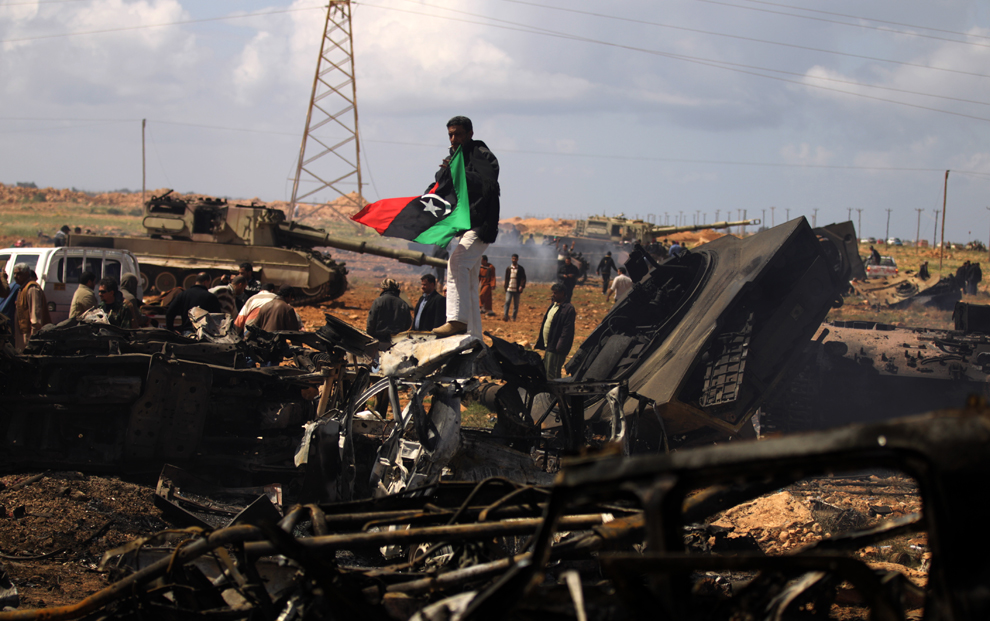
A Libyan rebel holds the rebellion flag as he steps over wrecked military vehicles belonging to Moammar Khadafy forces hit by French warplanes on March 20. Dozens of Khadafy military vehicles were destroyed in morning air strikes by the coalition west of Benghazi, as a semblance of normality returned with cars out on the road and street markets reopened in the rebel bastion. (Patrick Baz/AFP/Getty Images)
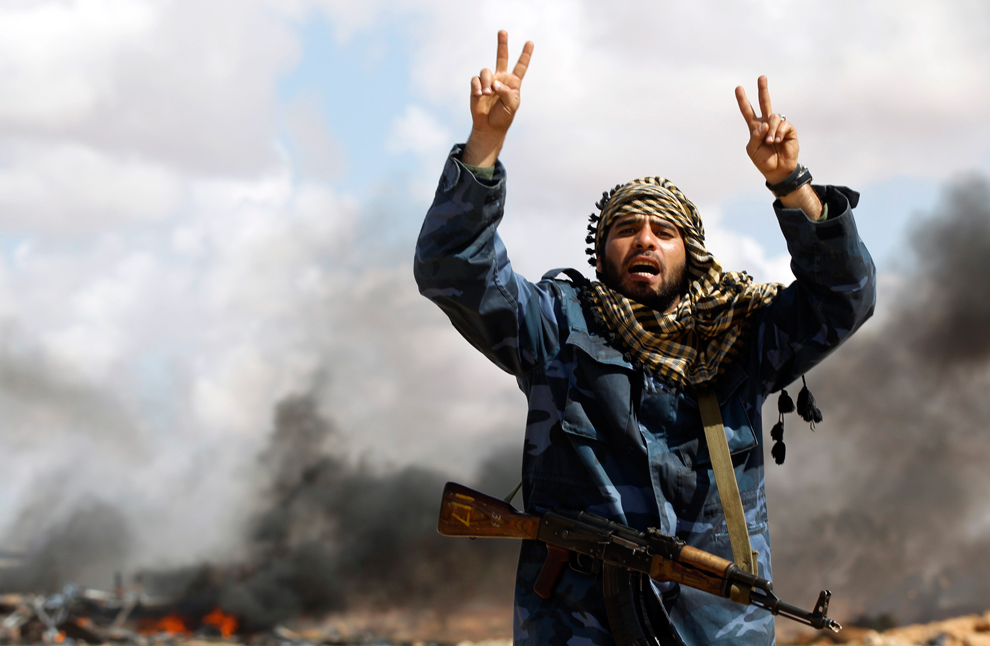
A rebel fighter shouts in front of a burning vehicle belonging to forces loyal to Moammar Khadafy after an air strike by coalition forces, along a road between Benghazi and Ajdabiyah March 20. (Goran Tomasevic/Reuters)
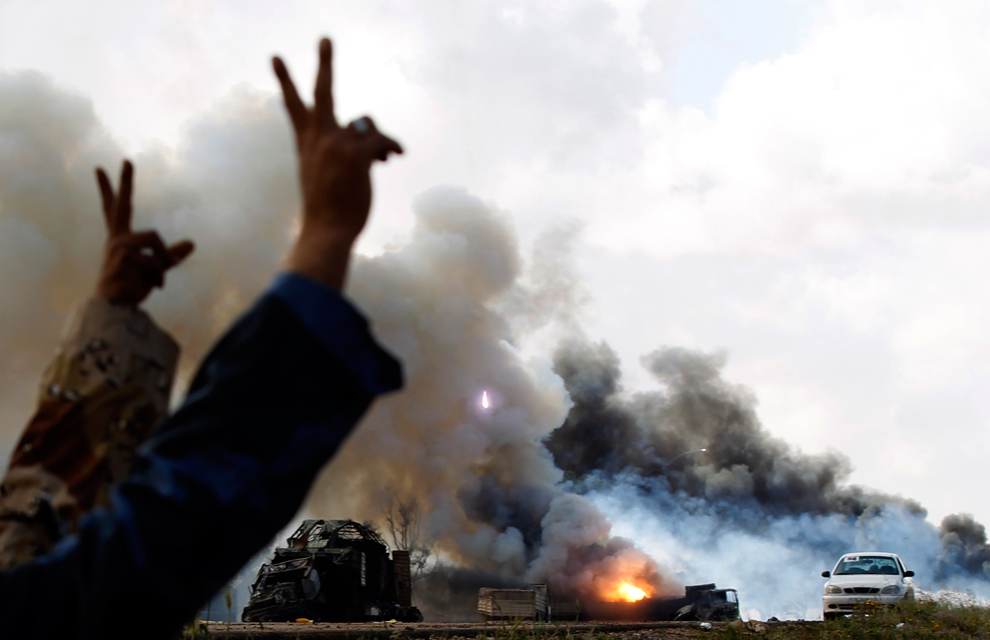
Rebel fighters gesture in front of burning vehicles belonging to forces loyal to Moammar Khadafy after an air strike by coalition forces along a road between Benghazi and Ajdabiyah March 20. (Goran Tomasevic/Reuters)

Curious Libyan onlookers take pictures of dead African teenagers, members of Moammar Khadafy's forces hit by airstrikes by French warplanes in al-Wayfiyah west of Benghazi, on March 20 in al-Wayfiyah. (Patrick Baz/AFP/Getty Images)
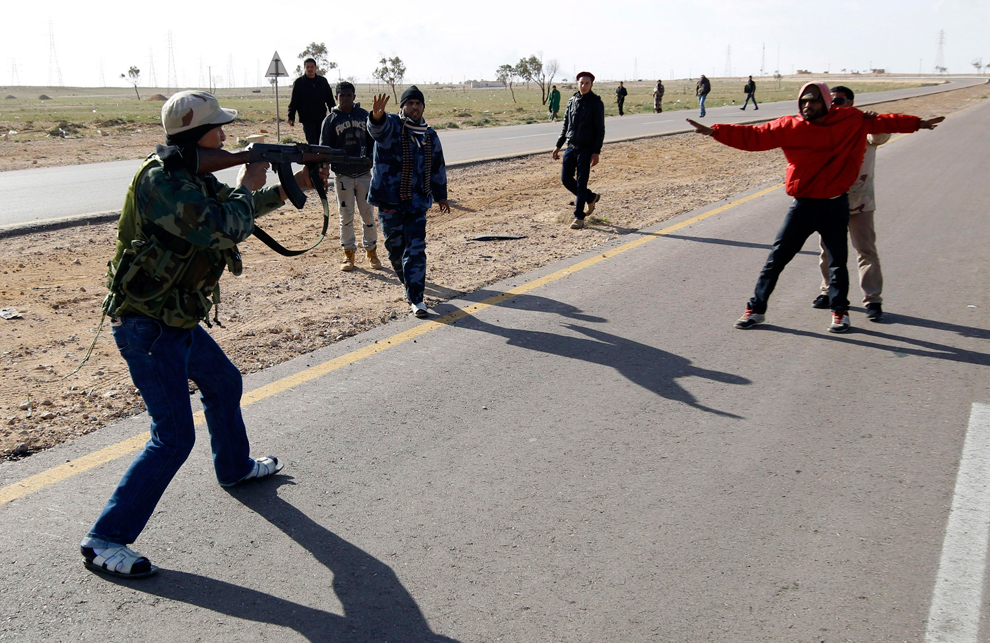
A rebel fighter points his gun at a suspected Khadafy supporter as other rebels try to protect the suspected supporter, on a road between Benghazi and Ajdabiyah on March 21. (Goran Tomasevic/Reuters)

A young girl flashes the victory sign during a celebratory rally after the United Nations approved a no-fly zone over the country on March 18 in Tobruk. (Joe Raedle/Getty Images)
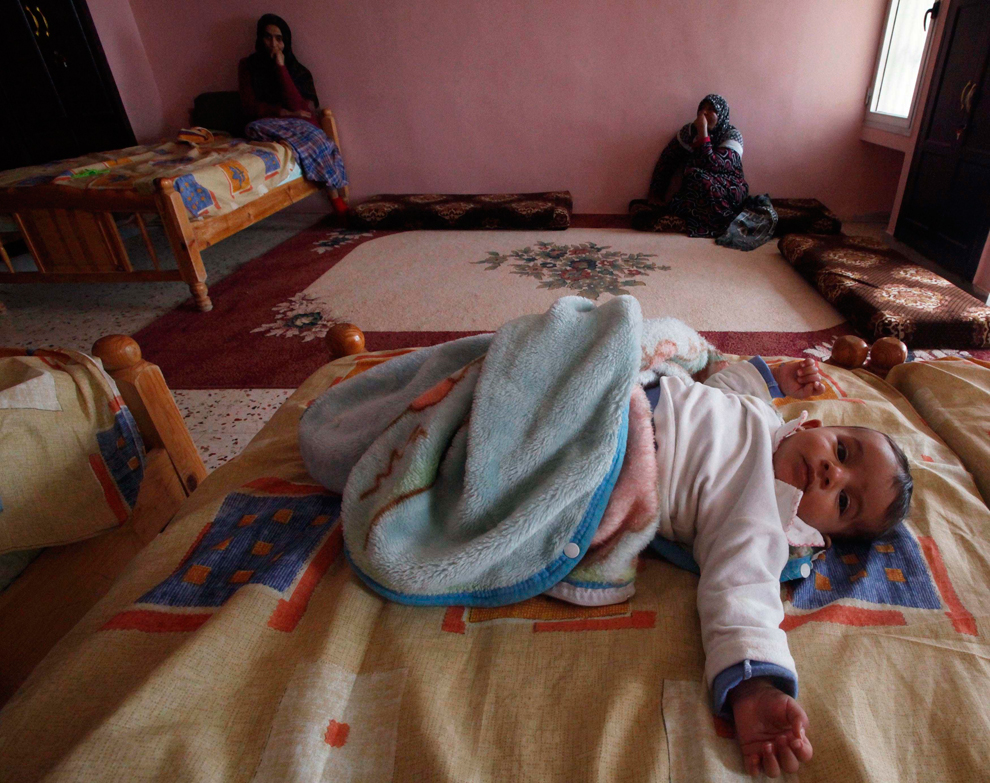
A Libyan family, who fled their house after shelling from troops loyal to Moammar Khadafy, takes shelter in a university in Tobruk, east of Tripoli, March 19. (Suhaib Salem/Reuters)
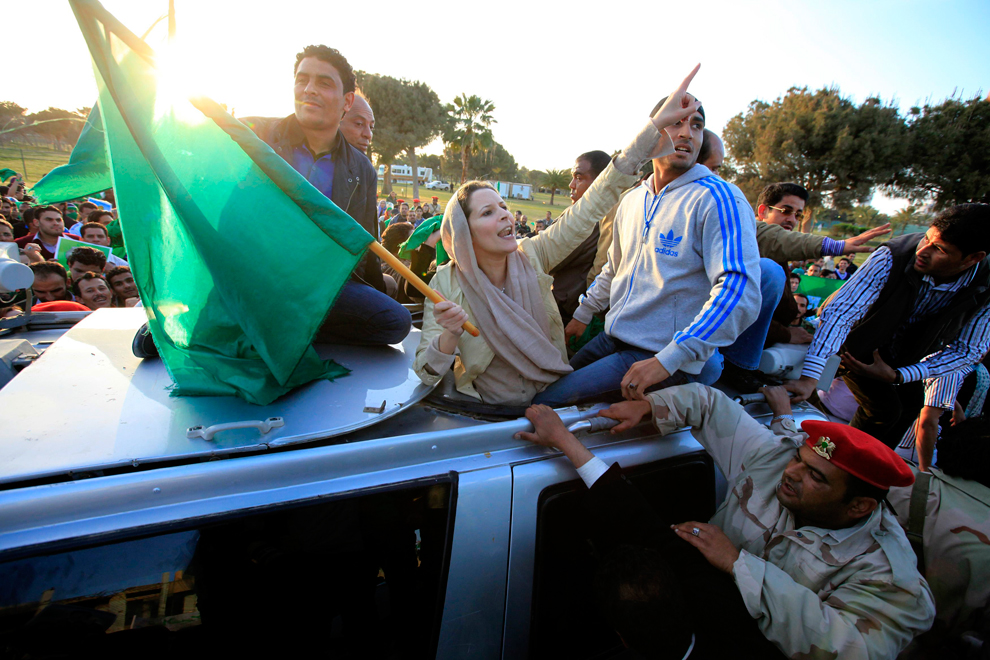
Aisha Khadafy, daughter of Moammar Khadafy, holds a Libyan flag as she greets supporters at Bab Al-Aziziyah in Tripoli March 19. Thousands of Libyans packed into Moammar Khadafy's heavily fortified Tripoli compound on Saturday to form a human shield against possible air strikes by allied forces. (Zohra Bensemra/Reuters)

Rebel fighters ride on a tank captured from Libyan leader Moammar Khadafy's forces in Benghazi March 19. (Goran Tomasevic/Reuters)

Vehicles belonging to forces loyal to Libyan leader Muammar Qaddafi explode after an air strike by coalition forces, along a road between Benghazi and Ajdabiyah March 20. (Goran Tomasevic/Reuters)

Δεν υπάρχουν σχόλια:
Δημοσίευση σχολίου